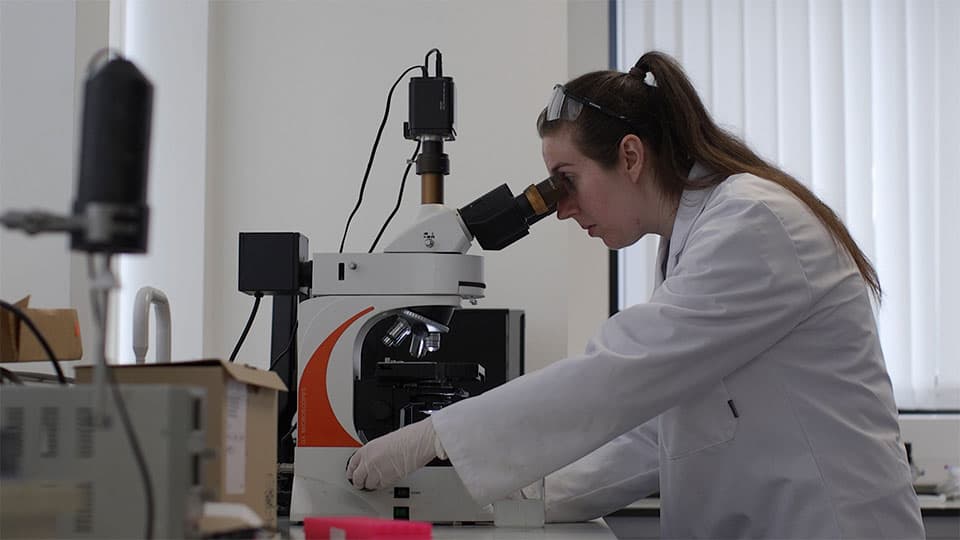Lisa Barrett Wheatley’s work, which focuses on breast cancer, aims to increase the effectiveness of cancer drugs by improving how they’re tested in the lab – with approximately 97% of drugs failing when tested on humans.
She said: “Current testing methods are often too simplistic, and animal models don’t effectively represent what happens in the human body. My goal is to improve this by creating a better way to test drugs in a tumour-like environment using a lab-based model. This also has the potential to reduce the use of animals in research, addressing both ethical concerns and scientific limitations."
“The core of my research is to replicate a tumour inside an artificial bubble—essentially, a mini tumour model. I create this by mixing a jelly-like material that supports cell growth with the cells themselves. This mixture is then formed into droplets—tiny bubbles—using a membrane system. These droplets serve as miniature tumour environments.
“I can control the size and uniformity of these bubbles, which is crucial for reproducibility when testing drugs. Inside the bubbles, the cells clump together to form mini tumour structures. We then introduce various components found in actual tumours to make the model as realistic as possible.”
Lisa Barrett Wheatley’s approach aims to improve the scalability and uniformity of testing – something that’s not too easy to achieve within current 3D models.
She adds: “My method uses a system that can be expanded from a small lab setup to one capable of producing thousands of models in just minutes.
“The bubble-creation technology I’m using is adapted from processes in the food, pharmaceutical, and cosmetic industries. While it hasn’t been widely used for human cell modelling before, I’m exploring how it can be repurposed for cancer research. While the full effectiveness of this model is still under investigation, it holds a lot of promise.
“Ideally, this technology could significantly impact how drugs are tested. It could allow pharmaceutical companies and researchers to test drugs in a more accurate, human-like model. If it proves to be more predictive than animal models, it could reduce the number of animals used in research and lead to more effective drugs reaching clinical trials.
“My dream is that others will adopt and develop this approach. I’ve focused on breast cancer, but the method could be adapted to other cancers like pancreatic or lung cancer. I hope researchers take this concept forward and integrate it into their own work.”
